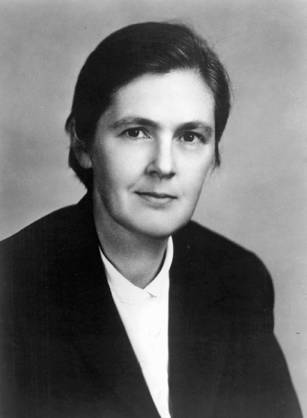RIC, REMS, and the REMarkable Dr. Frances Oldham Kelsey
METIS’ CEO and Founder Michelleanne is finishing up with the SQA Conference and is headed to the REMSIndustry Consortium (RIC) to Convene on March 22nd and 23rd.
The promised second half of our blog on REMS and The history of Thalidomide is below. See part 1 here. I wound up becoming even more fascinated with Dr. Frances Oldham Kelsey and her heroism, and it is particularly appropriate to celebrate her during Women’s History Month. If you want to hear more about REMS, listen to Ep. 6 Of the “Queens of Quality Podcast.”
If you’d like to know more about how our consultants can help your company with REMS programs, drop us a line at Hello@metisconsultingservices.com

Frances Kelsey: A Woman Who Made a REMarkable Difference in the World of Medicine
Who is Dr. Frances Oldham Kelsey?
Frances Oldham Kelsey was a Canadian-born physician who fought big pharma companies and a tremendous amount of pressure to do her job. In the process, she saved lives and heartbreak for thousands of Americans. She was born in 1914 and received her bachelor of science and master of science degrees from McGill University, Montreal, in 1934 and 1935. In 1938 she earned her Ph.D. from the University of Chicago and married and had two children while teaching and earning her medical degree there. She began her career at the Food and Drug Administration (FDA) in 1960 at the age of 46.
At the FDA, Kelsey worked in the Division of New Drugs and was responsible for reviewing and approving new drugs for the American market. During her time at the FDA, Kelsey became a vocal advocate for rigorous testing and regulation of new drugs. She also believed in ensuring the safety and efficacy of new medicines before they were approved for sale.
What did Frances Kelsey do that was so remarkable?
In 1961, during her first month at the FDA, Kelsey began her very first significant project, reviewing a new drug called Thalidomide. It was a sedative being marketed as a safe and effective treatment for morning sickness in pregnant women, among other sedative uses. As other countries began approving the drug for sale, Kelsey was skeptical about its safety. Dr. Kelsey knew that drugs could cross the placental barrier and harm an unborn baby. So she asked for evidence of trials on pregnant animals and requested that the company submit more data about its safety and efficacy, but they were reluctant to do so. These were never provided.
In fact, that company resubmitted the NDA several times without ever providing the information she sought. Dr. Kelsey’s insistence on more testing and regulation saved thousands of lives. When other countries began approving the drug for sale, thousands of babies were born with congenital disabilities. However, the drug was never approved for sale in the United States due to Kelsey’s diligence and attention to detail. Despite all her efforts, and even though the drug was not approved in the United States, as many as 20,000 Americans were given Thalidomide in the 1950s and 1960s. These individuals were part of two clinical trials operated by the American drug makers Richardson-Merrell and Smith, Kline & French. The Sales manuals even assured doctors that the new drug had been “shown to be absolutely harmless” in pregnant women and children.
And if not for Dr. Kelsey, that number would have grown exponentially.
She was eventually awarded the President’s Award for Distinguished Federal Civilian Service by John F. Kennedy for her efforts to ensure the safety of drugs prescribed to pregnant women.
How did Kelsey’s work impact the regulatory landscape?
Kelsey’s story has been told in films, books, and documentaries. She is a powerful symbol of achievement through dedication, hard work, and determination. Her story highlights the importance of rigorous testing and regulation in the world of medicine. The FDA strengthened and improved its regulations due to Kelsey’s work. The 1962 Kefauver-Harris Amendment required more data to be collected about the safety and efficacy of new drugs before they were approved for sale. The amendment also allowed the FDA to issue sanctions against pharmaceutical companies that did not comply with the regulations.
Kelsey’s work also had a global impact. Organizations like the World Health Organization (WHO) and the International Conference on Harmonization of Technical Requirements for the Registration of Pharmaceuticals for Human Use were formed to coordinate and facilitate the regulation and testing of drugs among different countries. And the FDA would never have created the REMS program.
What’s REMS again?
As we have mentioned, REMS (Risk Evaluation and Mitigation Strategy) is a drug safety program that the U.S. Food and Drug Administration (FDA) has implemented for medications to help ensure the benefits of the medication outweigh the risks. The key participants in the Risk Evaluation and Mitigation Strategy (REMS)are patients, healthcare providers, pharmacists, and healthcare settings that dispense or administer the drug. There are four pieces to REMS:
- Risk piece-there are serious risks identified
- Evaluation- through trials, analysis, etc.
- Mitigation piece- what can be done to reduce that risk
- Strategy piece – how that mitigation is done
When was REMS started?
Risk Evaluation and Mitigation Strategies (REMS) are programs instituted by the FDA to monitor medications with a high potential for serious adverse effects. REMS applies only to specific prescription drugs but can apply to brand-name or generic drugs. The REMS program was formalized in 2007. REMS programs are designed to reinforce medication use behaviors and actions that support the safe use of that medication. While all medications have labeling that informs healthcare stakeholders about medication risks, only certain medications require a REMS. REMS are not designed to mitigate all the adverse events of a medication; Rather, REMS focus on preventing, monitoring, and/or managing specific serious risks by informing, educating, and reinforcing actions to reduce the frequency and/or severity of the event.
According to the FDA’s website, there are three major components to the strategy for each REMS.
- Communication to Patients-REMS may require the drug manufacturer to develop materials for patients, like medication guides(these would be in addition to the medication guides all drugs must include.) These handouts contain FDA-approved information in patient-friendly language that can help inform patients about the safest way to use the medication.
- Communication to Health Care Providers, Pharmacists, and Health Care Settings
The REMS may include communicating directly to health care providers, pharmacists, nurses, or other participants involved in the delivery of these medications. In some cases, the communications may also target medical professional societies or state licensing boards to inform them of the REMS’ particular safety concerns and/or to support conveying this informationI to their members. They may provide information about a specific risk and steps to take to reduce it.
- Required Activities or Clinical Intervention-Sometimes these activities are referred to as “elements to assure safe use (ETASU).”
Sometimes participants are required to conduct activities that support the safe use of the medication. Sometimes, these activities must be undertaken before the drug can be prescribed, dispensed, or received.
The storied history of Thalidomide was one of the critical elements in the regulations that eventually led to the institution of the REMS programs.
Dr. Frances Kelsey’s story can be an inspiration to us all. She was a woman who rose to prominence during a time when women were not taken seriously in the world of medicine. Despite this, she was determined to ensure that the drugs on the market were safe and effective. Kelsey’s story highlights the importance of Quality assurance and regulatory oversight in the pharmaceutical and medical device world. Dr. Kelsey’s story is also a reminder that change is possible. By questioning the status quo and challenging the accepted standard, she brought about positive change in how drugs are regulated and tested.
Her story should remind all of us of the importance of insisting on evidence, putting patient health first and doing the work, and of course, standing up for what is right.
cited research
The Story of Thalidomide in the U.S., Told Through Documents. https://www.nytimes.com/2020/03/23/health/thalidomide-fda-documents.html
What’s in a REMS? | FDA. https://www.fda.gov/drugs/risk-evaluation-and-mitigation-strategies-rems/whats-rems
Risk Evaluation and Mitigation Strategies | REMS | FDA. https://www.fda.gov/drugs/drug-safety-and-availability/risk-evaluation-and-mitigation-strategies-rems



Recent Comments